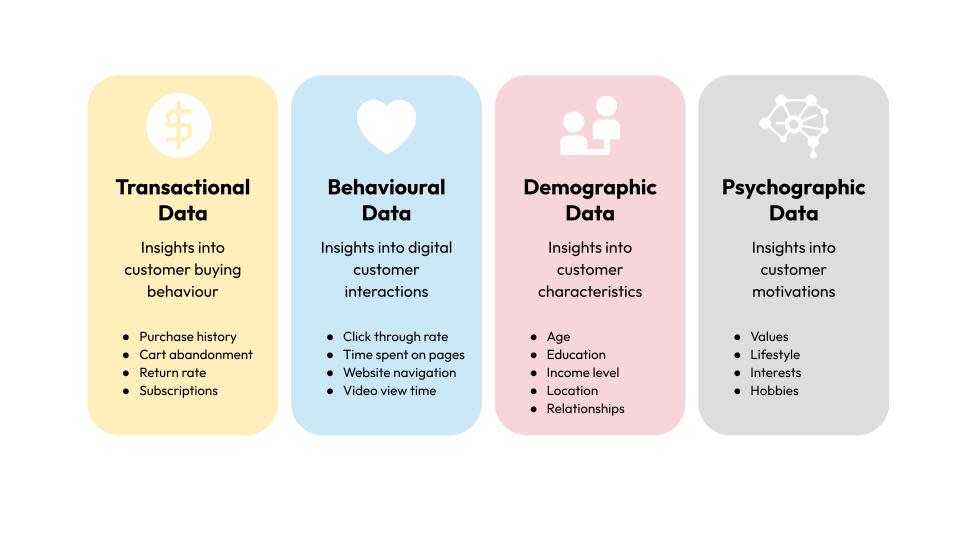TL;DR Customer lifetime value (CLV) measures the total revenue an organisation can expect from a relationship with a single customer, allowing brands to foster and reward loyalty across their existing customer base. Artificial intelligence technologies can ensure that every customer touchpoint adds lifetime value, rather than eroding it. This article explores how V2 clients are using AI in customer experience (CX) to strengthen connections, inspire trust, and extend the customer lifecycle.
In the modern experience economy, customer loyalty is no longer shaped solely by price and product features; it is more about how deeply a brand connects with a customer across every touchpoint. Customers who feel like the brand “gets” them tend to buy higher-value products and remain connected for longer.
Artificial intelligence (AI) technologies can play a transformative role in shaping these customer experiences. At V2 AI, we are working with clients across sectors on AI in customer experience use cases that surprise and delight customers in ways that far exceed what their competitors offer.
Prediction to Drive Proactive Incentives
Prediction allows organisations to take a proactive approach to customer lifetime value. Instead of reacting after a customer disengages, businesses can actively provide the support or incentives necessary to extend the customer relationship.
AI for Customer Experience Example
A leading Australian university is working with V2 to predict student success outcomes using AI. The AI solution considers factors such as class attendance, assignment and test scores, assignment submission history, class forum participation, and student demographics to predict the likelihood of a student completing the whole course. This enables the university team to offer early and frequent support to students who are at risk of dropping out. This allows sustainable business growth for the university while meeting the needs of students more strategically.
How Prediction Works
Organisations can collate third-party and internal data containing information about customers to provide a richer picture, for example:
Transactional data like purchase history, return rates, cart abandonment, and subscriptions
Behavioural data like time spent on pages, click-through rates, and website navigation patterns.
Demographic data, including age, education, income level, location, and relationships.
Psychographic data around values, lifestyle, and interests, collected through social media or surveys.
AI can use the data to automatically segment customers by grouping them into various categories, such as the frequency of their recent purchases, the number of purchases they make, and their level of engagement across channels. Once grouped, AI predicts the future behaviour of a customer in a group based on the past behaviour of other members in that group.
Segmentation enables AI to identify early warning signs of customer attrition, including decreased activity, slower response rates, or declining order values. With greater insights into customer loyalty, AI allows businesses to intervene before customers leave.

Data used by AI in customer experience
Hyper-Personalisation That Drives Retention
In the experience economy, customers want to feel understood, valued, and catered to. AI for customer experience (CX) makes it possible to deliver individual attention at scale to increase repeat purchases and average order value, two of the most influential drivers of CLV.
CX Innovation Example
V2 AI is collaborating with a leading Australian bank to develop a hyper-personalised user interface that enables self-verification of transactions. The app flags suspicious transactions, and the AI solution renders a unique information display that provides details about the flagged transaction so the customer can quickly action it, either marking it as safe or contacting the bank to escalate (block the card or request a refund).
This feature both delights customers and reduces the volume of customer support calls, driving operational efficiencies.
How Hyper-Personalisation Works
AI systems anticipate what the customer is most likely to purchase next and filter their browsing experience accordingly. With the right recommendations, customers can feel like the brand truly understands them, almost as if it’s reading their minds, ultimately driving a greater share of wallet.
Beyond product recommendations, AI models can also power dynamic content delivery, adjusting what a customer sees based on their predicted CLV. High-value customers receive early access to exclusive products, loyalty perks, or tailored retention offers, while lower-value segments might be nudged toward re-engagement with targeted incentives. This CLV-aware personalisation ensures that marketing resources are deployed strategically.
AI-driven hyper-personalisation can be used across any digital experience that requires customer context. For example, a healthcare organisation can provide a tailored “Tip of the day” through their appointment booking app, or education platforms can deliver adaptive learning paths based on each student’s strengths and gaps. AI ensures the content, timing, and channel are personalised to the individual.
While prediction and hyperpersonalisation in marketing are not new concepts, advances in CX AI technology are bringing new depth to understanding customer motivations. It can now rapidly examine a vast amount of data, including social media trends, broader global and cultural patterns, alongside past customer behaviour and customer demographics, to make recommendations with greater accuracy.
Adding the Human Touch
Your human resources can be the X factor that makes customers connect strongly with your brand. Human-to-human marketing is one aspect of this, which is often captured in brand language, behind-the-scenes posts on social media, or user-generated content (UGC) in feedback and testimonials.
Example
A leading Australian professional body has partnered with V2 AI to transform how it assesses candidates. Traditionally, human assessors reviewed long-form answers to determine whether candidates were eligible for certification.
V2 has delivered an AI assessment solution that automates answer checking. AI assessment is faster than human assessment, more consistent, and more accurate.
Meanwhile, human assessors have been freed up to deliver coaching and mentoring to new students. Human assessors are doing what AI can’t: connecting to students on a personal level and providing the mentoring they need to succeed in their profession. The organisation has projected time and cost savings of up to 40% in annual operational costs, which it can now refunnel to create new business opportunities.
Human-AI Synergy
AI enables you to take the human experience far beyond that, transforming your core business model in profound ways. AI in customer experience isn't just about customer-facing digital innovation. You can use AI to automate tedious tasks and free up your team for high-value, customer-centric work.
This will look different for every organisation. It requires you to analyse your business model and employee functions in depth, identifying opportunities where AI can step in and your team can step up, filling customer service gaps in ways that only humans can.
Final words
AI's ability to deliver personalised service in real-time, predict customer needs, and automate routine tasks allows organisations to use it to dramatically strengthen customer relationships and extend the customer lifecycle. The result is not just improved user experiences but also an entirely new approach. The combination of human empathy and AI-driven automation can create new business models and ultimately revenue streams that meet and exceed customer expectations. As AI in customer experience continues to evolve, organisations that embrace this technology will be well-positioned to connect with customers far more deeply than previously possible.




